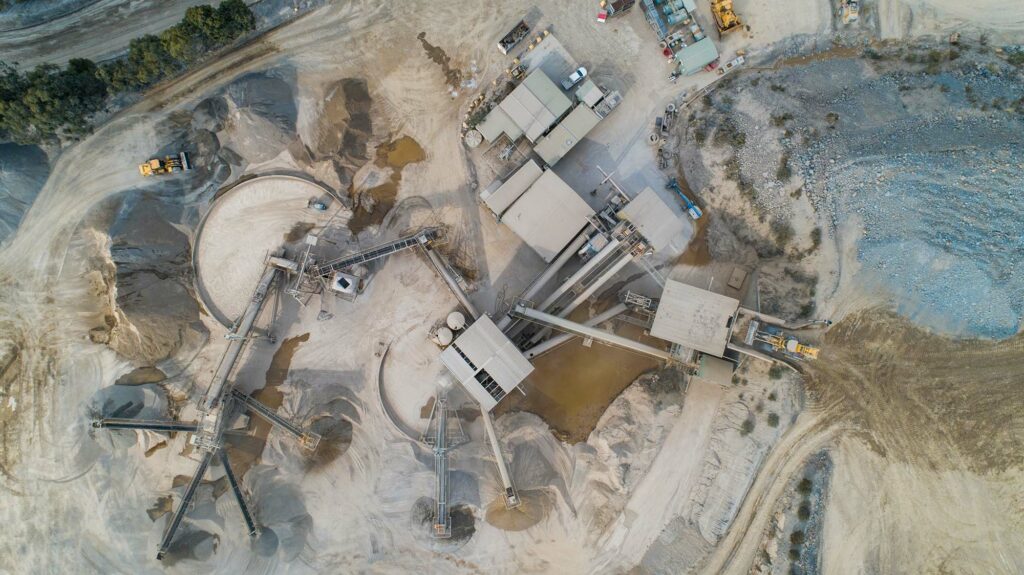Lofts is elevating the standard for small concrete orders, ensuring that every project, regardless of size, receives the utmost service and care.
We’ve established strong partnerships within our industry network to guarantee that your smaller concrete orders receive the spotlight they deserve.
By handling negotiations and coordination, we secure competitive rates and prompt deliveries on your behalf. This dedication is a cornerstone of our business, mirrored in our approach to quarry materials. We make certain that your project shines with the attention it truly deserves, proving that no order is too small for premium service.
Important Information
- At least 24 hours’ notice is recommended to secure your prefered delivery time and help us ensure our best service.
- Outer-Metro pricing is available upon request
- Other products including no fines concrete, exposed concrete & coloured concrete are available on request.
- There are a few notable additional fees to consider, which can be seen here
Need to order a few metres of concrete quickly?

Mini Mix Concrete
Mini mix concrete is standard concrete that is delivered in smaller quantities, typically using smaller trucks designed for easy access to restricted areas. This service is ideal for small repair jobs or smaller-scale projects where access is limited, or where the volume of concrete required is below 3m³, making the use of large delivery trucks unnecessary.
Key characteristics and benefits of mini mix concrete include:
- Small Batch Sizes: Perfect for minor projects or repairs, mini mix concrete is delivered in smaller quantities.
- Accessibility: Smaller trucks can navigate narrow streets, driveways, and other areas where larger trucks might struggle.
- Cost-Effective: While smaller volumes of concrete can be more expensive per unit, mini mix services help reduce both waste and the cost of ordering more concrete than needed.
Mini mix concrete is an efficient and practical solution for smaller projects, providing the necessary convenience and quality without the need for large-scale deliveries.

What is concrete?
Concrete is a durable, versatile, and resilient construction material composed of cement, water, aggregates (fine and coarse), and sometimes admixtures/additives. It’s the backbone of most construction projects due to its strength and adaptability.
- Cement – binds everything together.
- Water – determines the fluidity of the mix.
- Aggregates/Sand – provides strength, stability, and helps the mix compact.
- – Fine aggregates (<5mm, i.e. sand)
- – Coarse aggregates (>5mm, i.e. gravel or stone)
What is the difference between cement and concrete?
Cement is a dry powder that reacts with water to form a paste, which then hardens. Concrete is a mixture of cement with water, aggregates, and admixtures/additives. Cement acts as a binder in concrete, holding the aggregates together once it hardens.
How can I choose the right type of concrete for my project?
Selecting the right concrete depends on the project’s specific needs, such as durability, strength, aesthetic requirements, and environmental conditions. There are concrete products available to suit all project requirements, including general purpose, special purpose, decorative, and sustainable concrete. To order concrete, you will need to know which MPa, aggregate size, and slump you require, as well as any admixtures or additives (if required).
MPa, which stands for megapascals, is a unit of pressure or stress. In the context of concrete, it’s used to describe the compressive strength of the concrete mix and therefore how much pressure the concrete can withstand before failing. MPa therefore represents the strength of the concrete, so the higher the MPa, the stronger the concrete. Some typical strengths & applications include:
- 15MPa – Pavement kerbs and floor binding.
- 20MPa – Domestic pathways, foundations and house slabs.
- 25MPa (a popular choice) – Driveways, house slabs and foundations.
- 32MPa – Commercial pathways and roadways for heavy road traffic, suspended slabs, poor soil conditions.
- 40MPa – Commercial construction sites such as shopping centers, carparks and high story buildings.
What aggregate sizes are available?
The most common aggregate sizes and typical applications are below:
- Sand (<5mm) – Backfilling that needs to harden when set (e.g. around swimming pools or over pipes).
- 7mm Aggregate – Topping up an existing concrete slab, filing cavity walls, and blockwork.
- 14mm Aggregate – Driveways, footpaths, foundations, pits, stumps. This is popular as it can be pumped easily.
- 20mm Aggregate (most common) – A cheaper alternative to 14m Aggregate, but cannot be pumped as easily.
What is Slump?
Slump measures the consistency and workability of fresh concrete. The higher the slump, the more fluid & thinner the consistency of the concrete will be, which could be necessary for specific constructions but can also imply a higher water-cement ratio, potentially affecting strength and durability. 80m Slump is the most common choice.
Does higher slump cost more?
Slump does not change the price of the mix, however, some suppliers will charge a fee for special orders requiring over 120 Slump.
What are admixtures & additives?
Admixtures & additives are materials added to the concrete mix during the batching process (other than water, aggregates, and cement) to modify its properties for particular applications. They are used to enhance or alter the behaviour of concrete in terms of workability, curing time, strength, and durability and therefore enable the construction of more complex structures and improve the longevity of concrete installations. They can contribute to the sustainability of concrete by reducing cement content and enhancing durability.
Do you want to read further about Admixtures and Additives? Check out our FAQs here.
Stabilised Sand
Stabilised sand is a versatile construction material made by blending natural or recycled sands with cement in specific ratios, such as 10:1, 14:1, or 20:1. Approximately four 20kg bags of cement are used per one tonne of sand to get an 8% or 12:1 ratio. This mixture of sand, cement, and water creates a highly durable and permeable material ideal for various applications, including:
- Under-filling and infilling of pipes: Provides a stable and compacted fill.
- Bedding for driveways and patios: Ensures a solid base that can withstand heavy loads.
- Road construction: Ideal for levelling and creating a firm foundation.
- Base for slabs and floor: Offers a durable and reliable base for various flooring applications.

What Truck Sizes are Available?
Ready mix concrete is delivered in concrete mixer trucks or “agitators”, which feature a rotating drum that keeps the concrete agitated and workable during transport. This design ensures that the concrete maintains its quality and workability until it reaches the construction site, preventing premature setting over long distances.
These trucks are available in various sizes, including mini mix agitators, maxi agitators and twin steer agitators. The typical capacities & dimensions of these, can be found below:



How is the concrete taken off the truck?
There are various methods for taking concrete off the truck:
- Boom Pump – A long overhead pipe connected to the concrete truck.
- Line Pump – A hose connected to the concrete truck.
- Straight off the chute – Directly from the truck.
- Wheelbarrow – Directly from truck into wheelbarrow.




How much concrete do I need?
Selecting the right concrete depends on the project’s specific needs, such as durability, strength, aesthetic requirements, and environmental conditions. There are concrete products available to suit all project requirements, including general purpose, special purpose, decorative, and sustainable concrete. To order concrete, you will need to know which MPa, aggregate size & slump you require, as well as any admixtures or additives (if required).
Notable Additional Fees
- Short Load Fees (<4m3): $80 per m3 for orders under 4m3.
- Waiting Time: 30 mins grace, then $3.50 per minute.
- Returned Concrete: From $150-$300 per m3, depending on the supplier used.
- Outer Metro Cartage Fee: $3.50 per m3 per km, delivered more than 15km from the nearest plant.
- Cancellations: Any changes must be made 90 minutes prior to delivery to avoid charges.
Terms & Conditions
FAQs
What is the difference between standard concrete & high-strength concrete?
As above, standard concrete is used for more generic work e.g. slabs for houses or footpaths. High strength Concrete is designed to withstand heavier loads e.g commercial bridges and large buildings. High strength concrete provides greater durability.
Why is water content important in concrete?
The water-cement ratio significantly influences concrete's strength and durability. Too much water dilutes the concrete, reducing its strength and durability. The correct ratio ensures that the concrete achieves the desired workability and strength.
Can excessive water in the concrete mix affect its quality?
Yes, adding too much water to the concrete mix can significantly reduce its strength and durability. While a higher water content might improve workability, it dilutes the mix, leading to a weaker concrete structure and increased susceptibility to cracking and other damages.
What is the Summer/Winter/Spring Mix?
This refers to how much moisture is in the mix and is dependent on the weather. (i.e. summer mix has the most moisture as the weather would make it dry out quicker). If you do not specify a particular mix, the supplier will have a default for the day, depending on the weather.
What does the types of admixtures & additives include?
- Water-reducing admixtures: These reduce the amount of water needed to achieve a certain slump, improving the strength and durability of concrete without altering its consistency.
- Set-retarding admixtures: Used to delay the setting time of concrete, making it ideal for complex pours or in hot weather conditions to prevent premature hardening.
- Set-accelerating admixtures (“accelerator”): Increase the rate of early strength development, particularly beneficial in cold weather to reduce the risk of frost damage.
- Air-entraining admixtures: Introduce tiny air bubbles into the concrete, improving its workability and resistance to freeze-thaw cycles, crucial for outdoor concrete structures in cold climates.
- Superplasticisers: These are high-range water reducers that allow for a significant reduction in water content without compromising workability.
What is the difference between admixtures & additives?
Can admixtures & additives be used together?
Yes, admixtures and additives can be used in combination to achieve desired effects that a single admixture might not be able to provide. These are often referred to as speciality mixes, as the selection and proportioning of these materials is based on the specific needs of the project and the characteristics of the concrete mix. Examples of these are - Specialist Chemicals, Colour Pigments, Steel and Plastic. It is recommended to check with your concreter if any speciality mix or additives are needed.
What is an accelerator?
An accelerator is an additive used in concrete to speed up its setting time and early strength development, allowing for quicker construction and protection, especially in cold weather. It boosts cement hydration without harming the concrete's final strength and durability.
Accelerator is available in low, medium, high, or super high dose. They can be ideal in scenarios like morning concrete pours, with afternoon rain forecasts, to ensure quicker setting and prevent rain damage.
How is concrete tested for quality?
Concrete quality is primarily tested using the slump test for workability, and compressive strength tests on cylindrical samples. These tests help ensure the concrete mix meets the specified strength and consistency requirements for its intended use.
What measures can prevent concrete cracks?
Cracks can be minimised by managing the concrete mix to prevent excessive shrinkage, implementing proper jointing and reinforcement practices, maintaining an optimal curing process, and considering environmental conditions during placement.
Why is curing important for concrete?
Curing is critical to concrete's strength and durability. It involves maintaining adequate moisture and temperature conditions to support the chemical hydration process, which strengthens concrete. Proper curing can significantly increase concrete's long-term performance and resistance to environmental stresses.
How much notice is required to order concrete?
Usually, providing 1 to 2 days' notice works best, although we can often schedule concrete deliveries for the same day, if needed.
Can I return concrete if I have over ordered?
Yes, you can return excess concrete. However, this will be charged at a rate of $150-$300 + GST per m³, depending on the supplier used.















